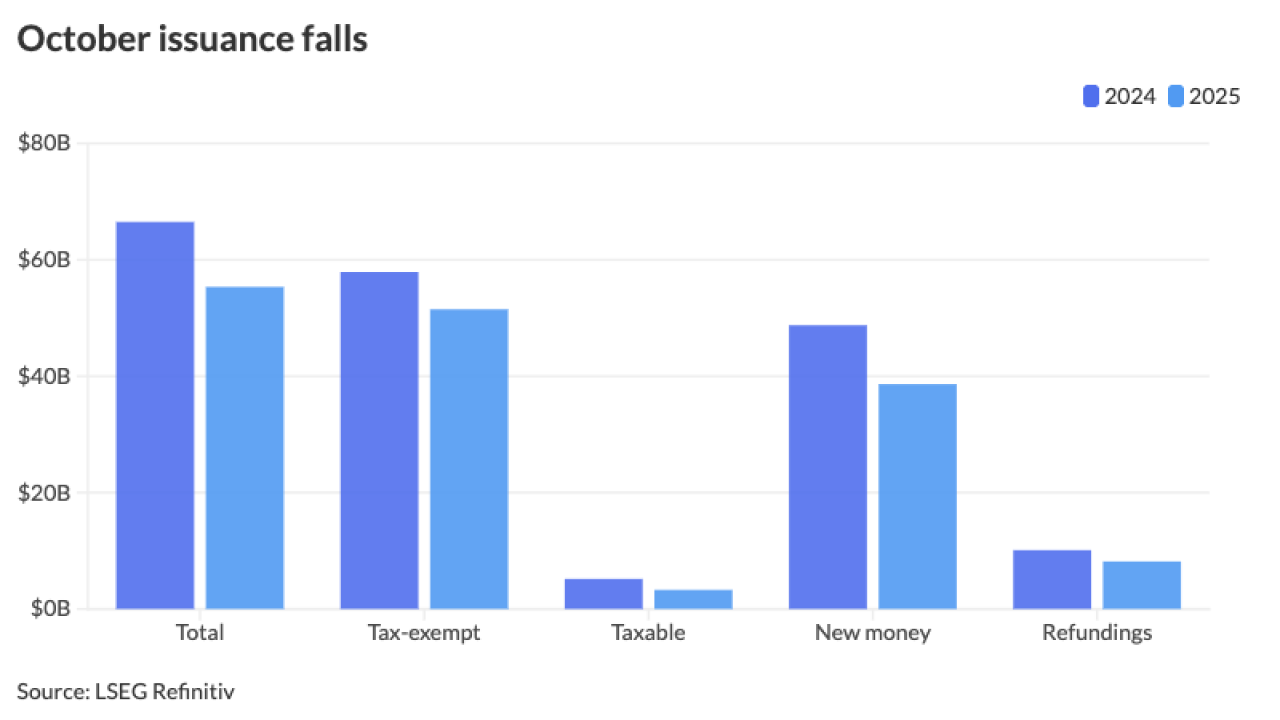A toll increase on seven San Francisco Bay Area bridges that will provide up to $4.45 billion for transportation improvements brings both benefits and potential downsides, according to Moody’s Investors Service.
Regional Measure 3 – which hikes bridge tolls by $3 over six years -- won the support of a majority of voters in nine Bay Area counties in a June 5 election.

The funds will be used to finance 35 highway and transit projects including new train cars for the Bay Area Rapid Transit system, freeway express lanes and interchange improvements.
Although the Bay Area Toll Authority, which runs the bridges, will collect the tolls, the money will go to the traffic relief projects determined by the Metropolitan Transportation Commission.
“The toll hikes could cause lower traffic demand and reduce BATA's own revenues and also curtail BATA's rate-raising capacity for its bridge system,” Moody’s said in its report. “Still, we expect that BATA’s economically strong service area and high resident wealth and income levels will limit these potential hurdles and offer future rate-raising flexibility.”
Over time, however, the Bay Area’s favorable economy will lead to more bridge crossings and revenue growth, the agency said. And while the toll authority will not benefit from the funds immediately, it will after the projects are completed – which Moody’s called a credit positive.
In addition to expanding the BART train fleet, the measure will also help extend the Caltrain commuter train service through San Jose and Santa Clara. Funds also will be provided to expand bus and ferry service, build new carpool lanes and improved interchanges, and create pedestrian and bike access over bridges.
Many of the new projects – such as new BART cars – are already in the planning stages and will get underway as soon as funding starts materializing next year, said Brian Mayhew, chief financial officer for the Metropolitan Transportation Commission.
He attributed the measure’s passage to voter sentiment to bring traffic relief to the congested region.
“People are willing to invest in things they think they’re going to get a direct return on and transportation is one of those things,’ Mayhew said.
The San Francisco-Oakland Bay Bridge now charges $6 during peak hours and $4 during non-peak periods while the region's other six state-owned toll bridges charge $5 at all times. All toll collections are in one direction only.
The first $1 toll increase goes into effect on January 1on the Bay, Richmond-San Rafael, San Mateo, Dumbarton, Carquinez, Benicia and Antioch bridges. Subsequent $1 increases will take place in 2022 and 2025.
The Golden Gate Bridge, which is run by a separate district, is not affected by the measure.





